Chinese Tea
Chinese Tea Leaves
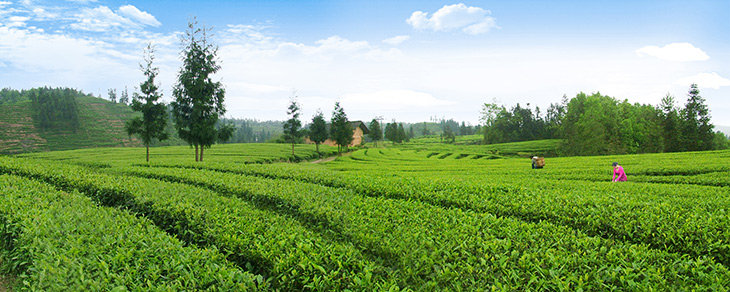
We know how tiring it is to get premium quality tea leaves either due to unavailability or lack of right guidance. Look no further. Now Cafe Essentials has lined up only the top-notch grades tea leaves from China. You can proudly tell your guests that these leaves are sorted and selected by experienced tea masters prior to release for sale. What’s more, occasionally, we will also offer the fresh-harvest of a tea variety as a Collector’s Item!
YuCha
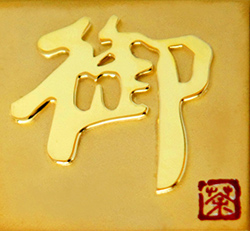
The Chinese Character "御茶" read as YuCha. It means Imperial Tea.
御茶 (YuCha) uses the highest grade of whole tea leaves - equivalent quality served only to the Royals in ancient China. The tea leaves are produced and processed by experienced tea growers using techniques passed on by the forefathers of Chinese Tea Connoisseurs. This ensures the innate flavour and aroma of the tea leaves are properly preserved.
Each YuCha is selected solely for its intrinsic quality –taste and aroma.

Anxi Guan Yin Wang
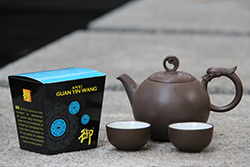 Originated in the 18th century, Tie Guan Yin is characterised by its curly dark jade green leaves. Two harvests are made per year - spring (i.e. Jade Tie Guan Yin) and autumn (i.e. Autumn Tie Guan Yin)with the latter being ranked best.
Originated in the 18th century, Tie Guan Yin is characterised by its curly dark jade green leaves. Two harvests are made per year - spring (i.e. Jade Tie Guan Yin) and autumn (i.e. Autumn Tie Guan Yin)with the latter being ranked best.
Anxi Guan Yin Wang (观音王) is selected from the autumn harvest using high quality Tie Guan Yin processed by experienced tea growers. Itoffers a pleasant fragrance coupled with lingering sweet after-taste.
To savour the full flavour of Anxi Guan Yin Wang:
- Add 1 sachet of tea leaves in teapot** and add some boiled water to rinse tea leaves.
- Pour the water to fill about 1/3 of the volume of the teapot and swirl the tea leaves in the pot for about 30 seconds.
- Top up the teapot with more water (approx. 150ml per sachet of tea leaves).
- Steep for another 35 seconds prior to drinking. Increase the steeping time for subsequent brewing.
**: Best to use YixingZisha teapot
DongtingBi Luo Chun
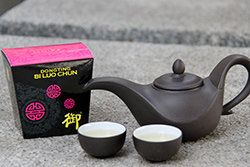 Originally called “Xia ShaRen Xiang”, this green tea was renamed as Bi Luo Chun (碧螺春) by Emperor Kangxi in 1675. It is characterised by its tightly-rolled up dark green leaves with white hairy appearance.
Originally called “Xia ShaRen Xiang”, this green tea was renamed as Bi Luo Chun (碧螺春) by Emperor Kangxi in 1675. It is characterised by its tightly-rolled up dark green leaves with white hairy appearance.
Dongting Bi Luo Chun is selected from tender leaf tips of young buds harvested in the early morning from March till end of spring season. It gives a fruity taste with strong floral aroma.
To enjoy the full flavour of Dongting Bi Luo Chun:
- Boil water and cool it to a temperature around 85oC. Never use boiling water!!!
- Rinse teapot** and cups with the hot water.
- Add 3g of tea leaves in pot and add some hot water to rinse tea leaves.
- Pour in 40ml of hot water and swirl the tea leaves in the pot for about 20 seconds.
- Add in 80ml hot water to the teapot. Steep for another 3min prior to drinking.
**:Best to use glass or porcelain teapot
XihuMingqianLongjing
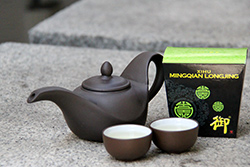 XihuLongjing (龙井) has a long history, dating back to Tang Dynasty. Originating from the mountains surrounding Xihu, it is characterised by its narrow, flat and yellowish-green leaves.
XihuLongjing (龙井) has a long history, dating back to Tang Dynasty. Originating from the mountains surrounding Xihu, it is characterised by its narrow, flat and yellowish-green leaves.
XihuMingqianLongjing is harvested 3 days prior to Qing Ming Festival. Using bare hands, the experienced tea roasters pan-fried the young buds each with a leaf. Its delicate nutty flavour coupled with light, refreshing aroma makes one yearn for more for every sip taken.
To savour the full flavour of XihuMingqianLongjing:
- Boil water and cool it to a temperature around 85oC.
- Rinse teapot** and cups with the hot water.
- Put 3 g of tea leaves and add some hot water to rinse tea leaves.
- Add hot water to about 1/5 of the volume of the teapot and swirl the tea leaves in the pot for about 30 seconds.
- Add hot water to top up to about 250ml of water.
- Steep for another 35 seconds prior to drinking. Increase the steeping time for subsequent brewing.
**: Best to use YixingZisha teapot
Tongmu Guan Jin Jun Mei
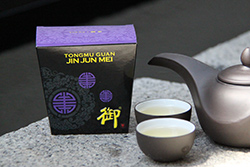 Jin Jun Mei (金骏眉) is one of the highest-priced black teas in China. First produced in 2005, this tea requires the picking of wild species tea buds before the Qing Ming Festival every year. More than 60000 tea buds are required to produce 500g of quality Jin Jun Mei.
Jin Jun Mei (金骏眉) is one of the highest-priced black teas in China. First produced in 2005, this tea requires the picking of wild species tea buds before the Qing Ming Festival every year. More than 60000 tea buds are required to produce 500g of quality Jin Jun Mei.
Tongmu Guan Jin Jun Mei is processed under the craftsmanship of Lapsang Souchong Tea. The slender, twisted leaves have lots of golden tips.A good brew offers a long-lasting sweet taste with pleasant aroma.
To brew a cup of aromatic Tongmu Guan Jin Jun Mei:
- Boil water to rinse teapot and cups.
- Add 3g tea leaves and add some water to rinse tea leaves.
- Pour in 100ml water. Steep 5 seconds prior to drinking. Increase the steeping time for subsequent brewing.
Yunnan Puer
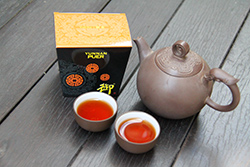 Yunnan Puer(普洱) is one of the most famous post-fermented teas. There are two types of Puer: Sheng Puer (i.e. Raw Puer) and Shu Puer (i.e. Cooked Puer). The raw Puer is steamed and compressed into cakes. The residual microbial fermentation activity eventually made the cakes became “cooked”.
Yunnan Puer(普洱) is one of the most famous post-fermented teas. There are two types of Puer: Sheng Puer (i.e. Raw Puer) and Shu Puer (i.e. Cooked Puer). The raw Puer is steamed and compressed into cakes. The residual microbial fermentation activity eventually made the cakes became “cooked”.
Yunnan Puer is made from quality grade of mao cha with the leaves beingput through a microbial fermentation before the drying and rolling process.The tea is then aged over a period of at least 10 years before it is released for sale. It offers a mellow taste with woody aroma.
To enjoy the full flavour of Yunnan Puer:
- Boil water to rinse teapot and cups with the hot water.
- Put 3 g of tea leaves and add some hot water to pre-wash tea leaves by infusing for 5sec. Drain off the water.
- Add boiling water to the pot.
- Steep for another 3 min prior to drinking. Increase the steeping time for subsequent brewing.
